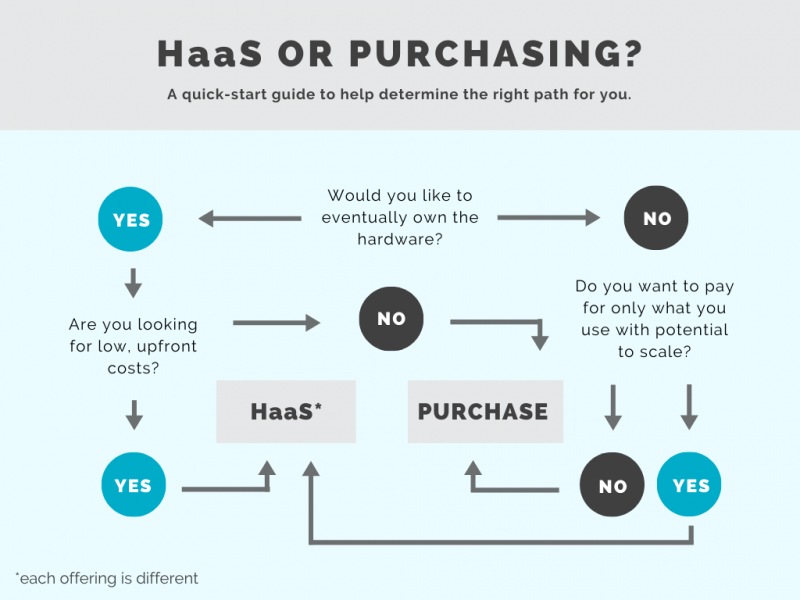By: Jessie Morgan, Technology Specialist at Red Thread
Hardware-as-a-Service (HaaS) closely follows the popular Software-as-a-Service (SaaS) model by giving access to hardware in addition to software, maintenance, installation, and upgrades. Essentially, customers are paying for the value provided by the procurement service rather than the underlying hardware itself.
Since HaaS is like renting or leasing, they share some of the same benefits. However, this is a unique approach that focuses specifically on the service, which means you’re paying for the utility more than the hardware.

Looking to learn more about HaaS? Make sure you ask each vendor the following questions to see what’s included in their offering.
WHAT AM I PAYING FOR?
While ‘as-a-Service’ normally suggests that the hardware is only accessible while paying for the service, some agreements enable a ‘path of ownership’ as you pay off the cost of the hardware while consuming the service. This is a similar concept to a subsidized cell phone plan where you pay for your day-to-day usage as well as monthly payments towards owning the device. So, at a specific time you will have paid for the hardware and therefore take ownership of it. Here, it’s important to take the depreciation of that asset into account.
WHO INSTALLS AND MANAGES THE SERVICE?
Before signing up for a service, it’s key to ask your provider if installation and management is included in the agreement. If the offering is simply to provide hardware and software licenses for an ongoing fee, you will own deployment and management. This works well with companies with adequate IT resources, but those with fewer staff or no dedicated IT department will have to learn themselves or engage an external service provider at an additional cost. Another option to explore is buying hardware as part of a managed service from an integration partner.
HOW EXTENDED IS YOUR OFFERNG?
Since HaaS offerings appeal to a broad range of businesses at an attractive cost, offerings are typically simple and features fewer variables with a bundle of solutions that work well together and are easy to use. However, some organizations may require offerings that provide flexibility or customization geared towards business needs. Overall, the more custom a company’s requirements are, the less likely a pre-made HaaS solution will suit their needs.
WHAT ARE YOUR REFRESH OPTIONS?
Just like a cell phone contract allows you to upgrade to the latest iPhone or Android device annually, even if you haven’t completely paid off the device, HaaS can offer that same flexibility. It’s important to consider if the agreement will allow you to refresh the hardware you’re paying for, or if you will end up owning it. Additionally, there might be an added cost to upgrade hardware based on removing what’s already there or a new kit installation fee. It’s important to ensure you aren’t stuck using outdated solutions when more modern tools are available. If retaining resale value from the assets you already own is more important to you, than purchasing the hardware outright might be a better option.
THE BOTTOM LINE
As with most ‘as-a-Service’ offerings, the key benefit of HaaS is simplicity. It solves a business problem with minimal cash funding and spreads the cost over time. This also makes ongoing costs more predictable and could free up money for other IT projects. In many cases, HaaS also helps avoid significant investment in a depreciating asset.
Benefits from HaaS adoption vary based on each contract, so it’s critical to vet your provider and determine which offering is right for you.
Red Thread’s HaaS offering is called AVaaS (AV as a Service). To learn more, reach out to our AV Team!



